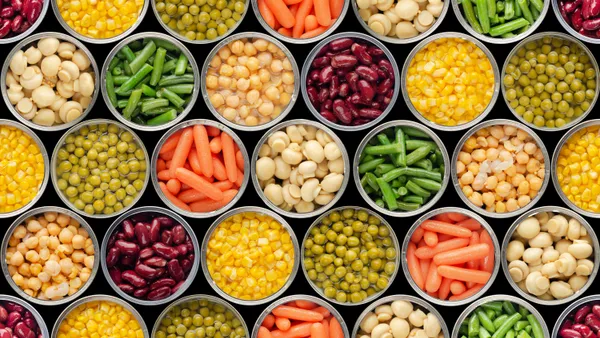The food sector is a huge source of greenhouse gas emissions – accounting for about one-third of all greenhouse gas emissions globally – and tackling that is no easy feat, given the sector’s complex, land-intensive value chains.
To support corporate action, Ceres analyzed the climate transition plans of companies in the Food Emissions 50 Benchmark, an investor-led initiative that assesses companies in the North American food sector on their progress towards aligning with and accelerating the transition to a net zero emissions economy for the first time.

The results show that, with more food companies making commitments to reduce their emissions, many like Aramark, General Mills, and Mondelez are taking positive steps to act on reducing their emissions. Still, the sector has a long way to go to meet their targets and limit global temperature rise to 1.5° Celsius by 2030.
How CPGs Can Establish & Maintain Brand Loyalty
Learn how brands can expand their loyal base, even when consumers are facing economic pressures.
Just 27 of the 50 focus companies in Food Emissions 50, which represent the highest-emitting food companies in North America, were included in the update because they were the only ones that have disclosed their full emissions and targets. And not one of those 27 companies’ public disclosures showed evidence of incorporating all the key elements for effectively reducing emissions identified in Ceres’ report on food sector climate transition plans, including innovating new products and engaging stakeholders throughout the value chain.
While this means the sector needs to make a lot more progress – and fast – the analysis did uncover best practices focus companies are implementing to drive progress on those key elements. With many more companies now creating climate transition plans, these examples are especially important to highlight.
Linking R&D and product development with emissions goals – Mondelez
To ensure business growth does not come at the expense of achieving targets, companies must embed emissions reductions in their strategic planning, including innovation and product development. Nine of the assessed companies are investing in R&D and other innovation to contribute to climate-related goals, but only three have a clear commitment or approach for weaving emissions targets into their growth and business strategies.
Mondelez reports detailed plans to integrate sustainability in product development. The company’s R&D teams in 13 tech centers around the world are focusing on key sustainability-related innovations, such as designing products that use lower GHG emitting ingredients and recyclable packaging. They also recently developed an internal tool to help assess the environmental impact of new and existing products – from raw materials to manufacturing – and can now estimate each one’s carbon and water footprint down to a stock-keeping unit and brand level.
Keep up with the story. Subscribe to the Food Dive free daily newsletterEmail:Sign up
Engaging with agricultural producers to reduce emissions from farming – General Mills
Agricultural production and land use change are typically the biggest contributors to the emissions’ footprints of companies in the food sector. To slash those emissions, companies must work with their supply chain’s producers and address the economic barriers farmers face to adopt more sustainable practices. Most assessed companies are engaging suppliers, with over a third of them moving beyond pilot projects and disclosing near-term plans to increase support for agricultural producers’ emissions reduction efforts.
General Mills aims to advance regenerative agriculture to 1 million acres of farmland (approximately 25-35% of its global sourcing footprint) and support farmers in the process. The company is partnering with the National Fish and Wildlife Foundation to provide farmers with financial resources to reduce the economic risk of implementing new agricultural practices. They are also working with scientific organizations to conduct research on the impacts of regenerative agriculture and sharing the results with its suppliers.
Shifting customer buying habits – Aramark
To meet their emissions reduction targets, companies must make sure that there is a demand for the lower emissions products and services they are developing. Our analysis found that just under half of the assessed companies are experimenting with shifting customer buying habits by offering expanded product mixes that include products that have lower emissions, and through marketing.
Aramark outlines actions it is taking to engage customers in a shift to more sustainable products and services, including by partnering with World Resource Institute’s Cool Food initiative to market its low carbon food choices. The company has also committed to a 25% emissions reduction associated with the food they serve by 2030.
Read More in Food Tech
Buckwheat in your ice cream? Quinoa in your milk? Sustainable grains emerge as a star ingredient
The Better Meat Co. awarded $1.4M grant from US Defense Department
How a Swedish company plans to dominate better-for-you snacking
AI could pose risk for food and ag companies
Ingredients in Focus: Hemp protein
Howtian debuts innovation in stevia sweetener market
How a former agriculture industry exec found himself CEO of cultivated meat company Meatable
Elmhurst 1925 launches a plant-based chicken powder
Want to see more stories in Food Tech?
The food sector is making progress on tackling emissions, but we need to see more companies start taking similar steps on the way to even bolder action. So far, no Food Emissions 50 focus company has disclosed quantitative information to demonstrate how it will achieve its public climate commitments.
Climate resiliency – and corporate bottom lines – depend on food companies taking ambitious action on their emissions and achieving their targets.


